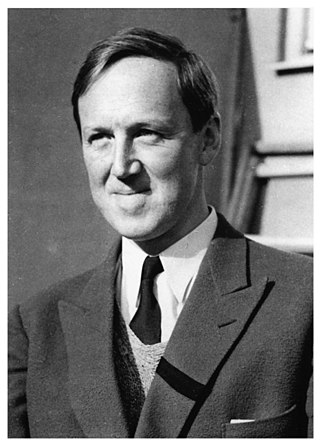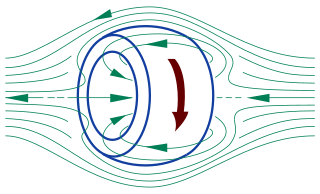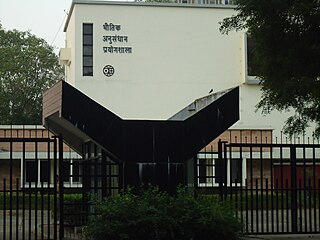Scientific research
Horton's interest in nuclear fusion grew during his graduate studies at the University of California at San Diego. Horton was inspired by the enormous potential of controlled fusion reactions to generate cheap, clean, and sustainable Energy on an unprecedented and inexhaustible scale i.e., human generated ‘Star Power’. Horton earned his PhD at UCSD under Marshall Rosenbluth, a scientist who had worked on the Manhattan Project and a close protégé of Edward Teller. Horton has published or edited thirteen books on the theoretical basis for plasma containment and transport, and co-authored over 200 papers. A frequently cited book is “Chaos and Structures in Nonlinear Plasmas” ISBN 81-7764-234-0.
Beginning in 1987, due to significant declines in US government funding of fusion research as a potential alternative energy source, Horton began to pursue research in space weather and the prediction of solar storms using chaos and plasma theory to model the magnetosphere. The magnetosphere is characterized by an extremely collisionless plasma making available new plasma transport regimes well beyond those existing in laboratory plasmas. Solar storm prediction has application for improving the reliability of communication and GPS satellite systems.
However, the quest for fusion containment in a laboratory has been the biggest source of contribution and inspiration during his 40-year career in theoretical physics. Recently Horton has focused on research in support of international fusion experiments including the ITER and Gamma10 fusion machines.

Princeton Plasma Physics Laboratory (PPPL) is a United States Department of Energy national laboratory for plasma physics and nuclear fusion science. Its primary mission is research into and development of fusion as an energy source. It is known in particular for the development of the stellarator and tokamak designs, along with numerous fundamental advances in plasma physics and the exploration of many other plasma confinement concepts.

Fusion power is a proposed form of power generation that would generate electricity by using heat from nuclear fusion reactions. In a fusion process, two lighter atomic nuclei combine to form a heavier nucleus, while releasing energy. Devices designed to harness this energy are known as fusion reactors. Research into fusion reactors began in the 1940s, but as of 2023, no device has reached net power.

Nuclear pulse propulsion or external pulsed plasma propulsion is a hypothetical method of spacecraft propulsion that uses nuclear explosions for thrust. It originated as Project Orion with support from DARPA, after a suggestion by Stanislaw Ulam in 1947. Newer designs using inertial confinement fusion have been the baseline for most later designs, including Project Daedalus and Project Longshot.

Hannes Olof Gösta Alfvén was a Swedish electrical engineer, plasma physicist and winner of the 1970 Nobel Prize in Physics for his work on magnetohydrodynamics (MHD). He described the class of MHD waves now known as Alfvén waves. He was originally trained as an electrical power engineer and later moved to research and teaching in the fields of plasma physics and electrical engineering. Alfvén made many contributions to plasma physics, including theories describing the behavior of aurorae, the Van Allen radiation belts, the effect of magnetic storms on the Earth's magnetic field, the terrestrial magnetosphere, and the dynamics of plasmas in the Milky Way galaxy.
This timeline of nuclear fusion is an incomplete chronological summary of significant events in the study and use of nuclear fusion.
Thomas Howard Stix was an American physicist. Stix performed seminal work in plasma physics and wrote the first mathematical treatment of the field in 1962's The Theory of Plasma Waves.

Magnetic confinement fusion is an approach to generate thermonuclear fusion power that uses magnetic fields to confine fusion fuel in the form of a plasma. Magnetic confinement is one of two major branches of fusion energy research, along with inertial confinement fusion. The magnetic approach began in the 1940s and absorbed the majority of subsequent development.

A field-reversed configuration (FRC) is a type of plasma device studied as a means of producing nuclear fusion. It confines a plasma on closed magnetic field lines without a central penetration. In an FRC, the plasma has the form of a self-stable torus, similar to a smoke ring.

A spheromak is an arrangement of plasma formed into a toroidal shape similar to a smoke ring. The spheromak contains large internal electric currents and their associated magnetic fields arranged so the magnetohydrodynamic forces within the spheromak are nearly balanced, resulting in long-lived (microsecond) confinement times without external fields. Spheromaks belong to a type of plasma configuration referred to as the compact toroids. A spheromak can be made and sustained using magnetic flux injection, leading to a dynomak.

The Physical Research Laboratory is a National Research Institute for space and allied sciences, supported mainly by Department of Space, Government of India. This research laboratory has ongoing research programmes in astronomy and astrophysics, atmospheric sciences and aeronomy, planetary and geosciences, Earth sciences, Solar System studies and theoretical physics. It also manages the Udaipur Solar Observatory and Mount Abu InfraRed Observatory. The PRL is located in Ahmedabad.

The Institute for Plasma Research (IPR) is an autonomous physics research institute in India. The institute is involved in research in aspects of plasma science including basic plasma physics, research on magnetically confined hot plasmas and plasma technologies for industrial applications. It is a large and leading plasma physics organization in India. The institute is mainly funded by the Department of Atomic Energy. IPR is playing a major scientific and technical role in Indian partnership in the international fusion energy initiative ITER. It is part of the IndiGO consortium for research on gravitational waves.

The Wendelstein 7-X reactor is an experimental stellarator built in Greifswald, Germany, by the Max Planck Institute for Plasma Physics (IPP), and completed in October 2015. Its purpose is to advance stellarator technology: though this experimental reactor will not produce electricity, it is used to evaluate the main components of a future fusion power plant; it was developed based on the predecessor Wendelstein 7-AS experimental reactor.
Dieter Martin Gruen is a German-born American scientist, who was a senior member of the Materials Science Division at Argonne National Laboratory. He received B.S. and M.S. (1947) degrees in chemistry from Northwestern University and the Ph.D. (1951) in chemical physics from the University of Chicago.

Liu Chen is an American theoretical physicist who has made original contributions to many aspects of plasma physics. He is known for the discoveries of kinetic Alfven waves, toroidal Alfven eigenmodes, and energetic particle modes; the theories of geomagnetic pulsations, Alfven wave heating, and fishbone oscillations, and the first formulation of nonlinear gyrokinetic equations. Chen retired from University of California, Irvine (UCI) in 2012, assuming the title professor emeritus of physics and astronomy.
Robert James Goldston is a professor of astrophysics at Princeton University and a former director of the Princeton Plasma Physics Laboratory.
Ksenia Aleksandrovna Razumova is a Russian physicist. She graduated from the Physical Faculty of Moscow University in 1955 and took a position at the then called Kurchatov Institute of Atomic Energy in Moscow, then USSR. She defended her Ph.D. in 1966, was Candidate in Physical and Mathematical sciences in 1967, and became Doctor of Sciences in 1984. She is laboratory head at the Institute of Nuclear Fusion, Russian Research Centre Kurchatov Institute. Since the beginning she is actively involved plasma physics in research on the tokamak line of Magnetic confinement fusion.

Direct Fusion Drive (DFD) is a conceptual low radioactivity, nuclear-fusion rocket engine designed to produce both thrust and electric power for interplanetary spacecraft. The concept is based on the Princeton field-reversed configuration reactor invented in 2002 by Samuel A. Cohen and is being modeled and experimentally tested at Princeton Plasma Physics Laboratory, a US Department of Energy facility. It is also modeled and evaluated by Princeton Satellite Systems. As of 2018, the concept entered Phase II, a simulation phase, to further advance the design.
Ravindra Nath Sudan was an Indian-American electrical engineer and physicist who specialized in plasma physics. He was known for independently discovering the whistler instability in 1963, an instability which causes audible low-frequency radio waves to be emitted in the magnetosphere in the form of whistler waves. He also pioneered the study of the generation and propagation of intense ion beams, and contributed to theories of plasma instabilities and plasma turbulence.
Fatima Ebrahimi is an Iranian-American physicist and inventor. She carries out theoretical and computational plasma physics research for applications including fusion energy and space and astrophysical plasmas.
Harold Ralph Lewis, Jr., was an American physicist, researcher at the Los Alamos National Laboratory, and professor at Dartmouth College. Lewis worked on Project Sherwood and conducted research in nuclear physics and plasma physics.











